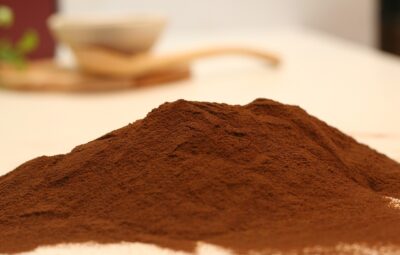Close to a quarter of the whole population of the world (24.8%) suffers from anemia, which amounts to 1.62 billion individuals.
Despite its well-known status, there is still much to be learned about this blood-related issue.
This article will provide a comprehensive description of anemia, including the cause, warning signs, treatments, and other related information.
What Is Anemia?
Anemia is a sickness that causes the number of red blood cells or hemoglobin to be lower than normal. Not enough healthy red blood cells in the body reduce the oxygen levels in the blood and result in a decrease of oxygen being delivered to the tissues around the body.
We often suppose anemia is just one ailment, yet in reality, it actually takes on many forms. And each type has its specific causes. In the following section of the post, we will go into more detail about the various forms of anemia and the underlying causes of the disorder.
Anemia leads to a heightened risk of death or illness among females and children, negative consequences in childbirth, decreased job performance, as well as behavioral and intellectual developmental issues among children. This condition can be temporary or chronic (long-term). The extent of anemia-related conditions can vary from minor to intense.
Symptoms
Not every person with anemia has the same symptoms. The indicators and manifestations will differ depending on the type, source, overall well-being, and intensity. Often the signs of a medical condition go unnoticed because of a problem in the person’s health.
While symptoms may vary from one type to another, those common to all forms of anemia include:
- Fatigue and weakness
- Insomnia
- Leg cramps
- Dizziness
- Pale or yellowish skin
- Difficulty concentrating
- Headache or shortness of breath, particularly after exercise
- Rapid heart rate, especially after exercise
- Chest pain
- Cold hands and feet
In certain situations, the indications of anemia may be subtle and hard to detect, yet as the condition deteriorates, the warning signs will become more conspicuous.
Causes
Anemia develops when the body is not able to produce enough red blood cells. We need red blood cells to survive. These small cells act as carriers of hemoglobin, a type of protein that attaches to iron molecules.
It is essential to recognize the significance of these molecules, as they allow oxygen to move from the lungs to the other sections of the body. The multiple possible causes of a decrease in red blood cells lead to various types of anemia.
Below, you can take a look at different types and the causes behind them:
Iron deficiency anemia
This happens when the quantity of iron in the body is insufficient to produce hemoglobin. A lack of iron in the system can happen from inadequate intake through what you eat, losing blood, being pregnant, or because of digestive problems like celiac disease that stop you from absorbing iron. This disorder of anemia goes hand-in-hand with long-term kidney disease.
Vitamin deficiency anemia
This is caused by a lack of vitamins that the body uses to make red blood cells. These vitamins include vitamin B12, the variant of vitamin B known as folate, and vitamin C. Vitamin B12 deficiency anemia is pernicious anemia.
Aside from not eating enough, aspects that can amplify the growth of this kind of anemia comprise drinking too much alcohol, being with child, taking medicines prescribed by a doctor such as antiepileptic drugs and antacids, as well as stomach issues.
Aplastic anemia
This stems from harm to the cells responsible for creating blood within the bones. Stem cells are responsible for the creation of both red and white blood cells. In most cases of aplastic anemia, the body’s own immune system begins to attack the stem cells.
Anemia of this type can be caused by radiation and chemotherapy, pregnancy, and viruses such as hepatitis, parvovirus B19, HIV, Epstein-Barr, and cytomegalovirus. Aplastic anemia can be caused by autoimmune conditions, certain drugs, and contact with harmful toxins.
Macrocytic anemia
This is caused by an excessive amount of unusually large red blood cells that are more plentiful than healthy red blood cells. A type of anemia that occurs frequently is megaloblastic anemia, which causes the bone marrow to form red blood cells that are abnormally large and have an unusual shape, known as megaloblasts.
Sickle cell anemia
This happens because of a change in the gene that tells the body to make hemoglobin. Red blood cells in sickle cell anemia have atypical hemoglobin, which alters their function and shape. They become rigid, misshapen, and sticky.
Thalassemia
Mutations in the DNA of cells that manufacture hemoglobin are the cause of this. These mutations are passed to children from parents.
Hemolytic anemia
This is when the rate of red blood cells being destroyed is greater than the rate at which they are created. Destruction of these cells is called hemolysis. This anemia could be either passed down from one’s family (hereditary spherocytosis) or developed as one grows older (acquired).
The following are potential causes of acquired hemolytic anemia: viral/bacterial infections, specific drugs, cancers of the blood, certain tumors, utilization of mechanical heart valves, or an intense response to a blood transfusion. Autoimmune hemolytic anemia can be the result of autoimmune conditions like lupus, ulcerative colitis, and rheumatoid arthritis.
Risk Factors
Although the likelihood is equal for all persons, certain individuals have a higher probability of contracting this issue than other individuals. Factors that make you more likely to develop anemia or fewer red blood cells include:
Age
As is the case with many other medical conditions, there is a heightened chance for anemia in older individuals. Older individuals aged 65 and above tend to be more prone to anemia.
Family history
Individuals who have relatives with a genetic form of anemia, such as sickle cell anemia, are more prone to developing this condition themselves.
Insufficient intake of certain nutrients
Not having enough vitamin B12 and iron in your diet increases the chance of anemia.
Menstruation
Menstruation, which causes a depletion of red blood cells, might be one of the causes of anemia.
Intestinal problems
Individuals with conditions like celiac disease, Crohn’s disease, or other digestive troubles that impede the effectiveness of the small intestine in absorbing nutrients can develop anemia.
Chronic health problems
People with diabetes, kidney disease or failure, cancer, and other prolonged medical conditions have an increased risk of becoming anemic since these illnesses can reduce the amount of hemoglobin in the red blood cells.
Pregnancy
Women who are expecting and have not taken their multivitamins, consisting of iron and folic acid, are more likely to experience anemia. In addition to the previously mentioned elements, other factors can increase your chances of developing anemia. For example, the likelihood of anemia increases if there is a part of some sicknesses, autoimmune conditions, and illnesses related to blood.
People who use drugs that influence the manufacture of red blood cells are more likely to experience anemia. Other factors include exposure to toxic chemicals. Drinking too much alcohol can lead to a decrease in red blood cells, leading to anemia.
Iron-Deficiency Anemia
Iron-deficiency anemia is the most common type of anemia. This happens when the body lacks sufficient iron, which is a critical substance that is necessary to produce hemoglobin. When the iron in your blood is deficient, your body is not able to receive the required amount of oxygen.
Although iron-deficiency anemia is widespread, a lot of individuals aren’t aware they have it. It is feasible to have symptoms over a long period without being aware of what is causing them.
What Are the Causes of Iron-Deficiency Anemia?
Inadequate iron intake.
A prolonged lack of sufficient iron intake can lead to a deficiency in the body. Some iron-rich foods include meats, eggs, and some types of greens. Iron is a necessary component for pregnant women and children who are growing and maturing quickly, so an extra amount of food items rich in iron should be included in their diet.
Pregnancy or blood loss due to menstruation.
Excessive menstruation can lead to iron-deficiency anemia in women within the reproductive age group. Pregnancy requires the extra intake of iron because the body needs an increased supply of oxygen for the infant.
Internal bleeding.
Particular medical issues can result in inner draining, which can prompt a shortage of iron in the bloodstream (iron-deficiency anemia). Illustrations of conditions involving the stomach, colon, and intestines may include a stomach ulcer, polyps in the colon or intestines, or colon cancer. Frequent consumption of certain over-the-counter medications, like aspirin, can result in bleeding within the stomach.
Inability to absorb iron.
Some illnesses or operations that affect the intestines can also inhibit the manner in which your body takes up iron. Although you may consume the necessary amounts of iron in your diet, those with celiac disease or who have had intestinal surgery like a gastric bypass could experience issues absorbing the proper amount of iron.
Endometriosis.
If you suffer from endometriosis, it is possible that you experience a significant amount of bleeding during your menstrual cycles. Endometriosis might be present without you realizing it since it is located in the abdominal or pelvic region and not inside the uterus.
Genetics
Certain medical conditions, such as celiac disease, can run in families and can lead to difficulty in taking in enough iron. Additionally, genetic conditions or mutations can exacerbate the situation. One of these is the TMRPSS6 mutationTrusted Source.
This alteration leads to the production of an excessive amount of hepcidin in the body. Hepcidin is a hormone that prevents the intestine from taking up iron.
Anomalous genetic issues may lead to anemia by causing unusual bleeding. Examples include Von Willebrand disease and hemophilia.
How Is Iron-Deficiency Anemia Diagnosed?
A doctor can diagnose anemia with blood tests. These include:
Complete blood count (CBC) test
Typically, a physician’s initial diagnostic tool is a comprehensive blood count (CBC). A CBC measures the amount of cellular or cell-related components in the blood, including:
- red blood cells (RBCs)
- white blood cells (WBCs)
- hemoglobin
- hematocrit
- platelets
A Complete Blood Count offers facts about your blood that aids in uncovering iron-deficiency anemia. This information includes:
- the hematocrit level, which is the percent of blood volume made up of RBCs
- the hemoglobin level
- the size of your RBCs
In anemia caused by a lack of iron, the amount of hemoglobin and hematocrit present is low. Also, RBCs are usually smaller in size than normal.
A CBC examination is typically conducted during a regular medical check-up. It’s a good indicator of a person’s overall health. It may also be performed routinely before surgery. This evaluation is beneficial in recognizing this form of anemia since most people who suffer from a lack of iron are oblivious to it.
Other tests
Anemia can usually be confirmed with a CBC test. Your physician may prescribe supplementary blood exams to measure the intensity of your anemia and aid in the selection of treatments. They may also examine your blood through a microscope. These blood tests will provide information, including:
- the iron level in your blood
- your RBC size and color (RBCs are pale if they’re deficient in iron)
- your ferritin level
- your total iron-binding capacity (TIBC)
Ferritin is a protein that facilitates the retention of iron in the body. Low levels of ferritin indicate low iron storage. A TIBC analysis is employed to show the amount of transferrin that has iron attached to it. Transferrin is a protein that transports iron.
At-home tests are accessible that can determine iron amounts in addition to ferritin measurements and TIBC.
Tests for internal bleeding.
If your physician is suspicious that your anemia is being caused by inner bleeding, extra tests might be necessary. A fecal occult test might be carried out to detect the presence of blood in your stool. Feces containing blood may suggest that there is bleeding occurring in your intestine.
A physician may also do an endoscopy, in which a miniature camera on a bendable tube is employed to observe the lining of your digestive system. Here are the two types:
- An EGD test also called an upper GI endoscopy, allows a doctor to examine the lining of the esophagus, stomach, and upper part of the small intestine.
- A colonoscopy also called a lower GI endoscopy, allows a doctor to examine the lining of the colon, which is the lower portion of the large intestine.
These tests can help identify sources of gastrointestinal bleeding.
How Is Iron-Deficiency Anemia Treated?
The treatment for iron-deficiency anemia is determined by the degree of the condition and what initiated it. In the majority of cases, this illness is caused by either not getting enough iron in one’s daily diet or the body’s inability to absorb iron from what is consumed. Below are some options for treatment.
Iron supplements
Supplementing with iron pills can replenish the iron balance in your body. You should try to take iron tablets on an empty stomach whenever you can, as it can aid your body in its absorption of the supplement. If the medication has a negative effect on your stomach, you can consume it while eating meals. It might be necessary to consume the supplements for a few months. Iron supplements may cause constipation or black stools.
Diet
Diets that include the following foods can help treat or prevent iron deficiency:
- red meat
- dark green, leafy vegetables
- dried fruits
- nuts
- iron-fortified cereals
Additionally, vitamin C may help your body absorb iron. Your doctor may advise you to consume vitamin C in combination with iron supplements, like with a glass of orange juice or a citrus fruit.
You should think about what you consume or consume, which may reduce your iron levels or impede iron absorption, such as dark tea.
Treating the underlying cause of bleeding.
Taking iron pills will not be as effective if a lot of bleeding has caused the lack of iron. A physician may provide birth control medication to females who experience intense menstruation. This may lessen the quantity of menstrual flow each month.
If there is a tear, wound, or another internal issue which is causing your bleeding, a surgical procedure might be necessary to cease the bleeding.
In the worst instances, we can administer a red blood cell transfer or an intravenous iron to replenish iron and blood fast.
How to Prevent Iron-Deficiency Anemia
Iron-deficiency anemia is a result of inadequate iron intake and can be avoided by consuming a diet abundant in iron-rich foods, and food sources that are rich in Vitamin C. Moms should give their infants either breast milk or a formula that is fortified with iron.
Conclusion
Anemia is a medical condition in which the body lacks a sufficient amount of hemoglobin and red blood cells. If it is not treated, the results could be incredibly severe, even potentially leading to death. Fortunately, many cases of anemia are preventable and treatable.







